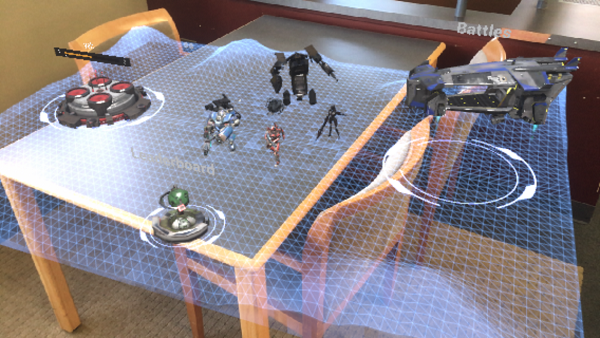AR Games for iOS 11 Review: The Machines



Augmented Reality (AR) is supposedly "the next big thing" in videogames, and Apple has embraced that possibility by outfitting iOS game developers with ARKit to help standardize and accelerate AR on iOS. During the recent iPhone 8 and 8 Plus and iPhone X launch event, Apple had a developer from Directive Games take to the stage and demonstrate the company's ARKit-powered new game, The Machines. After upgrading to iOS 11, the first AR-enabled game I played was The Machines ($4.99). Does it live up to the hype? Read on to find out.
Related: The Witness for iPhone & iPad Review
The basic premise of The Machines is two opposing robotic factions battling a war of attrition between various units, with the destruction of the enemy base within the countdown clock of time allotted being the ultimate goal. Games can be played against an AI opponent or via player-versus-player online multiplayer matches. It is hardly an original idea, and the battling units themselves are standard mech, futuristic tank, and gun turret fare. Of course, what gives The Machines its fresh coat of innovation is its use of augmented reality to project these battles onto a real-world surface. In optimal conditions, this projection offers a glimpse into what degree of entertainment augmented reality might provide in the future. Unfortunately, the reality of AR in its current state is that it still has a long way to go before it is as seamless and bulletproof as the onstage demos would like to portray.
The first issue I encountered with The Machines was finding a suitable surface to project the game. It did not like shiny tabletops or floors without distinct borders. Moreover, once a functional surface was found, the playfield would often have a hard time matching the surface boundaries with the game boundaries, as shown in the screen shot below.

When oriented this way, the game would tend to suddenly rescale while playing, making the need to walk around, zooming in and out of the action even more challenging. When the camera is stable, the ability to walk around the playfield and move your iPhone closer or farther from the action is cool! It is during these moments that brief glimpses of AR's promise is realized. Yet even in this AR-induced state, controlling the target reticle and aligning the fighting robots is a real chore. Even after nearly an hour of play, I continued to struggle with the on-screen controls.

That brings me to my third and most concerning criticism against the game, its power consumption. The Machines is the most power-hungry game I have played on my iPhone to date. After less than 20 minutes of continuous play, my fully charged iPhone was down to 70% battery remaining. Another 15 minutes dropped it below 40%. This voracious power consumption also heated up my iPhone to make it uncomfortably warm to hold, even with it being encased. That said, I cannot imagine playing the game for longer than an hour in a single session, as the amount of walking around and leaning back and forth to zoom in and out the projected battlefield requires a degree of determined physical endurance as well.

Final Verdict
I have to at least give props to Directive Games for pursuing the idea of and the current state of technology capable of rendering AR gaming to its limits. When it works, The Machines offers an exciting peek into the future of not only gaming, but also a whole slew of reality-augmented visualizations. Unfortunately, the game maker appears to have pushed The Machines beyond the limits, at least for the current state of iOS technology. Any intention to play the game longer than 45 minutes at a time will require being tethered to a power cable and maybe slipping on a pair of thermal gloves. Maybe the iPhone X will fare better with its new GPU architecture, but for existing iPhone gamers, The Machines will take your hardware into extreme territory as you battle against robots on a simulated extreme environment.


Mike Riley
Mike Riley is a frequent contributor to several technical publications and specializes in emerging technologies and new development trends. Mike was previously employed by RR Donnelley as the company’s Chief Scientist, responsible for determining innovative technical approaches to improve the company’s internal and external content services. Mike also co-hosted Computer Connection, a technology enthusiast show broadcast on Tribune Media's CLTV.


 Rhett Intriago
Rhett Intriago
 Cullen Thomas
Cullen Thomas

 Rachel Needell
Rachel Needell





 Olena Kagui
Olena Kagui
 Leanne Hays
Leanne Hays



